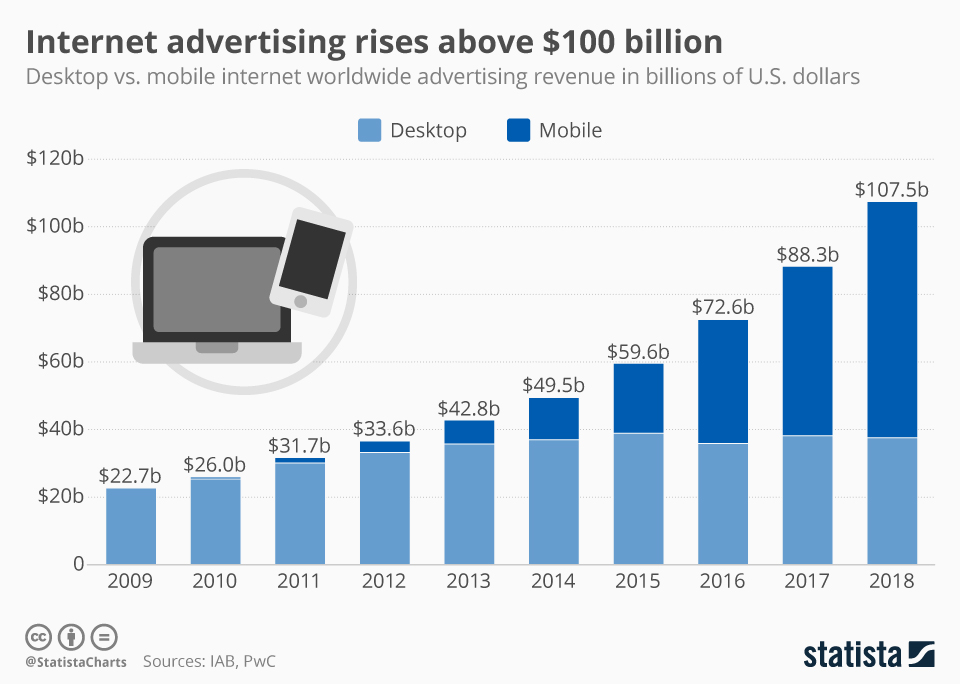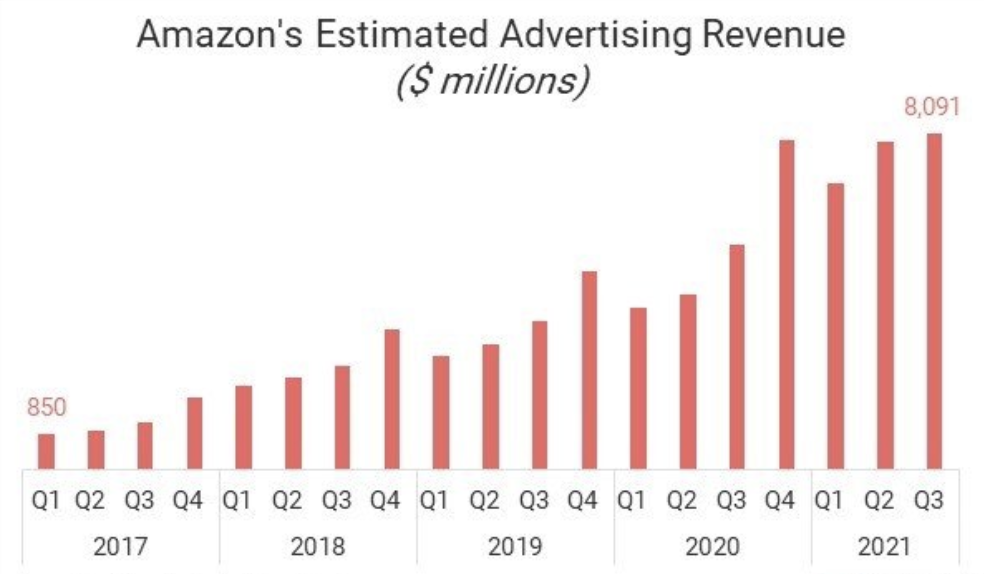Big Data Monitoring
The practice of big data monitoring involves the analysis and comprehension of the online activities and behaviors exhibited by visitors. This term includes both structured (textual) data, such as database transactions, and unstructured (non-textual) data, such as videos, photographs, social media content, and information from Internet of Things (IoT) sensors. The aforementioned information is currently regarded as an essential asset for contemporary organizations in the 21st century (Parise, 2016). While we browse, purchase, or engage in other activities online, our actions are monitored and converted into data points. The extensive assemblage of user behavior and preferences is commonly denoted as big data. Therefore, the utilization of big data monitoring functions as an imperceptible conduit that establishes a connection between individuals and advertisements, thereby enhancing their attractiveness and pertinence.
Background: Surveillance Capitalism
According to Zuboff (2019), surveillance capitalism is an emerging economic paradigm that seeks profit through the commodification and exploitation of personal data. This model depicts a transition from conventional industrial capitalism to a more data-driven, consumer-focused form of contemporary capitalism. With the new market environment and the entry of capitalism, the collection and commodification of personal data has never been more important. Technology behemoths like Google and Facebook hold significant importance due to their exceptional prowess in the realms of data collection and analysis. In addition to leveraging data insights to drive their substantial expansion, they have also instigated a profound transformation in contemporary capitalist business paradigms. Through the combination of massive data analysis and markets, these companies have not only created enormous economic value for themselves but have also redefined the business model of modern capitalism.
Decoding Big Data Surveillance
Every online action is captured as a data point, creating a vast data asset that boosts business value and competitiveness (Parise, 2016). Big Data is this massive user behavior and choice record. Cookies, device IDs, and IP addresses allow organizations to identify and augment user data to create asset value. Big Data tracks user interests and behaviors in real time, allowing online adverts to be targeted like GPS. Large platforms like Google, Facebook, and Amazon use this integrated data to segment users through their customer data management platforms and apply marketing tools for targeted promotions. Products we’ve seen on site A will appear as relevant ads on site B (Evans, 2009). Shopping site user behaviour analytics provide accurate ad targeting, as shown in the video.
Advertising economy
The advertising economy is an increasingly pivotal domain in today’s globalized landscape. With the proliferation and application of big data technology, the advertising sector has transformed from traditional modalities to smarter, more targeted marketing strategies. Platforms offer complimentary services with the intention of enticing users, subsequently generating revenue through advertising, all the while leveraging artificial intelligence and machine learning technology to enhance their offers within the contemporary digital economy (Mansell & Steinmueller, 2020). The evolution in question has been highlighted by a report conducted by IAB and PwC, which has disclosed that revenues generated from internet advertising have exceeded $100 billion. This figure represents a remarkable growth rate of 386% over the course of the past ten years.

“Internet advertising rises above $ 100 billion” by statista is licensed under CC BY-NC 2.0.
A complex analysis of vast amounts of user behaviour data, purchasing patterns, and online search histories rests at the heart of this growth. As an illustration, Coca-Cola has effectively utilised its extensive Facebook fan base to foster stronger relationships with these followers, so enhancing the visibility of its brand. Walmart alone accounts for $4 billion in annual sales.In conclusion, the utilisation of big data is shaping the future direction of the advertising sector, creating new avenues for marketers and brands to explore in terms of market potential.
Amazon’s Recommendation Engine: A Deep Dive

By integrating its retail prowess with the advertising industry, Amazon has created a thriving advertising environment. The recommendation engine employed by Amazon utilizes big data analytics to provide predictions of relevance, thereby delivering personalized recommendations to consumers. This is achieved through an analysis of their purchase and browsing history, as well as the application of item filtering techniques. The system not only considers linear interactions, but also incorporates nonlinear relationships to enhance the accuracy of product and service suggestions, resulting in a 33.3% increase in sales (Parise, 2016). The ability to personalize content has greatly contributed to Amazon’s rapid growth inside the advertising industry. In the previous fiscal year, the United States had a remarkable surge in advertising sales, amounting to $15.73 billion. This represents a staggering year-on-year growth rate of 52.5% when compared to the same figures from 2018. It is worth mentioning that almost 90% of advertising income are derived from e-commerce platforms, particularly through sponsored products and branded search ads, as highlighted by Bruell (2021). Stats demonstrate Amazon’s high advertising potential thanks to the combination of its e-commerce and data analytics offerings. Amazon can attribute its advertising success back to careful data analysis and application for increasing effectiveness while simultaneously increasing profits.

“Amazon’s Estimated Advertising Revenue” by stratabky is licensed under CC BY-NC 2.0.
According to our findings, Amazon has clearly established itself in the advertising industry. Amazon remains at the top of their game when it comes to advertising platforms for advertisers and businesses alike, thanks to their superior understanding of user behavior analytics capabilities and sophisticated ad platforms designed specifically to reach target demographics. Take full advantage of user data analytics – creating ads that are both efficient and targeted, and cost effective while achieving results.
Here’s how Amazon’s recommendation system works:
- By analyzing user purchases and browsing behaviors, this system makes product suggestions tailored specifically for them, such as suggesting other sporting goods for customers who recently made athletic footwear purchases.
- Recommend similar products for unfulfilled orders in the user’s shopping basket to increase the likelihood of effective sales by recommending similar products.
- Customers Also Bought… is a feature designed to increase recommendations by tracking purchasing habits of other shoppers and therefore enhances shopping experiences overall.
The Privacy Conundrum
With the rapid advancement of surveillance technologies, the preservation of user privacy has emerged as a prominent topic of discussion in the public sphere. In contemporary times, the heightened prevalence of privacy concerns is attributed to the proliferation of various platforms that exploit comprehensive user data to achieve exact ad targeting. Numerous participants within the realm of internet advertising employ “tracking cookies” on users’ computer systems, so engaging in the practice of monitoring the websites that those users frequent. The act of treating users as commodities presents substantial privacy problems. The data gathering and retention practices of search engine providers have faced criticism from privacy activists and authorities, as these maneuvers have not escaped their attention (Dye, 2009). In response to these concerns, certain providers have agreed to decrease the length of time during which they retain personally identifiable data. As an example, Google reduced the duration of their retention period from two years to a mere nine months. The implementation of data collecting, and behavioural targeting techniques has resulted in legal actions and enquiries by legislative bodies.
To manage user data in a lawful, necessary, and honest manner, businesses must thoroughly research and adhere to rules including the Personal Information Protection Act and the Civil Code. Ensuring the confidentiality and integrity of user data is not solely a legal obligation, but rather a fundamental element contributing to a company’s competitive edge. Companies need to improve data security by self-regulating, providing clear data access rights, implementing improved cybersecurity measures, and standardizing their terms of service. The general people should also know the legislation, delete cookies from their browsers frequently, and verify the reliability of rules.
Conclusion
As our world has become more digitalized, big data and analytics have become inevitable tools for marketing and business in the 21st century. From individual behavior tracking to expanding tech giant data to more accurate advertising recommendations, data has drastically transformed capitalism as an economic model. However, its associated privacy concerns have raised alarm among citizens, corporations, and governments. Businesses of the future must devise strategies which consider not only technology or data analytics alone but also ethical or regulatory restrictions to achieve an efficient digital ecosystem that benefits all parties involved.
References list
BBC NEWS, (2008, 09,09). Google to dump user data earlier http://news.bbc.co.uk/2/hi/technology/7605801.stm
Benkler, Y. (2008). 1. Introduction: A Moment of Opportunity and Challenge. In The Wealth of Networks: How Social Production Transforms Markets and Freedom (pp. 1-28). New Haven: Yale University Press.
Datafloq. (2013, Jul 19). How Coca-Cola Takes A Refreshing Approach to Big Data. https://www.smartdatacollective.com/how-coca-cola-takes-refreshing-approach-big-data/
Dye, Jessica. 2009. “Consumer Privacy Advocates Seek Search Engine Solution.” EContent, March issue. http://www.econtentmag.com/ Articles/News/News-Feature/Consumer-PrivacyAdvocates—Seek-Search-Engine-Solution-52679. htm.
Feldman, S. (2019). Internet Advertising Rises Above $100 Billion [Photo]. Statista. https://www.statista.com/chart/17969/internet-advertising-worldwide/
iluli by Mike Lamb. (2021, June 1). Targeted Ads: The Dark Side of Divulging Your Data. . Youtube. https://www.youtube.com/watch?v=yVwKQqbMw-c
Mansell, R., & Steinmueller, W. E. (2020). Technologies and datafication practices. In Advanced Introduction to Platform Economics. (pp.55-74) Edward Elgar Publishing Limited.
O’Reilly, L., & Stevens, L. (2018). Amazon, With Little Fanfare, Emerges as an Advertising Giant; Its push challenges the big ad sellers, including Facebook, Google and TV networks. The Wall Street Journal. Eastern Edition. https://www.wsj.com/articles/amazon-with-little-fanfare-emerges-as-an-advertising-giant-1543248561
Parise, S. (2016). Big data: A revolution that will transform how we live, work, and think: JITCAR. Journal of Information Technology Case and Application Research, 18(3), 186-190. http://ezproxy.library.usyd.edu.au/login?url=https://www-proquest-com.ezproxy.library.sydney.edu.au/scholarly-journals/big-data-revolution-that-will-transform-how-we/docview/1857445951/se-2
Pwc, (2018). IAB internet advertising revenue report Annual report 2018. https://www.iab.com/wp-content/uploads/2019/05/Full-Year-2018-IAB-Internet-Advertising-Revenue-Report.pdf
Stratably, 2014. “Many people think our main competition is Bing or Yahoo. But really, our biggest search competitor is Amazon.” https://stratably.com/the-importance-of-advertising-to-amazon-and-everyone-else-unlocked/
The Economist. N.d. Amazon’s ambitious drive into digital-advertising. https://www.economist.com/business/2018/10/27/amazons-ambitious-drive-into-digital-advertising
Zuboff, S. (2019). Surveillance Capitalism and the Challenge of Collective Action. New Labor Forum, 28(1), 10–29. https://doi.org/10.1177/1095796018819461

